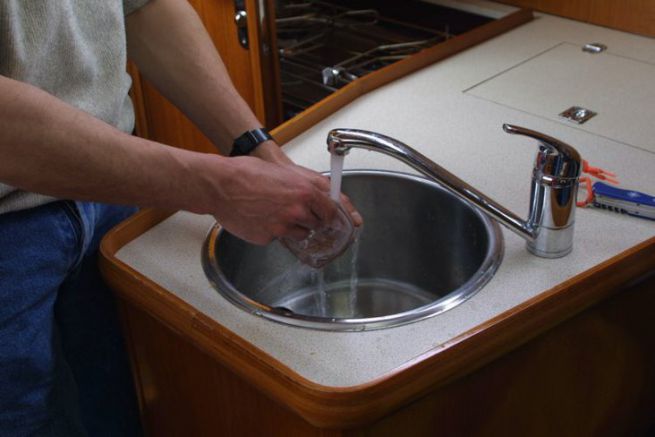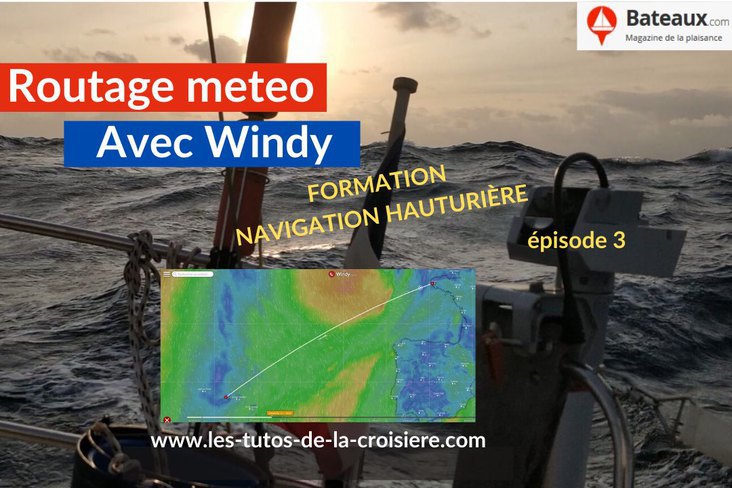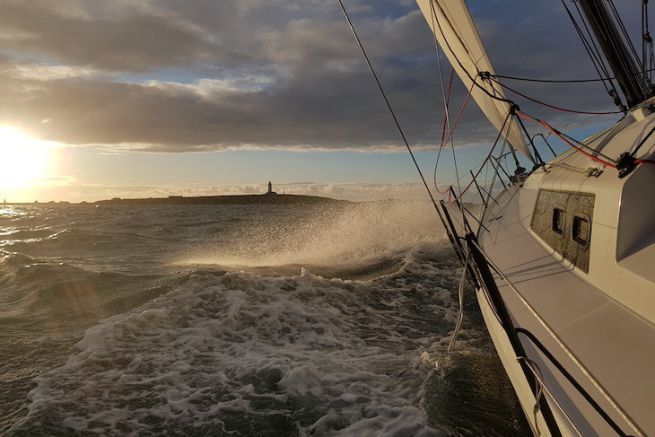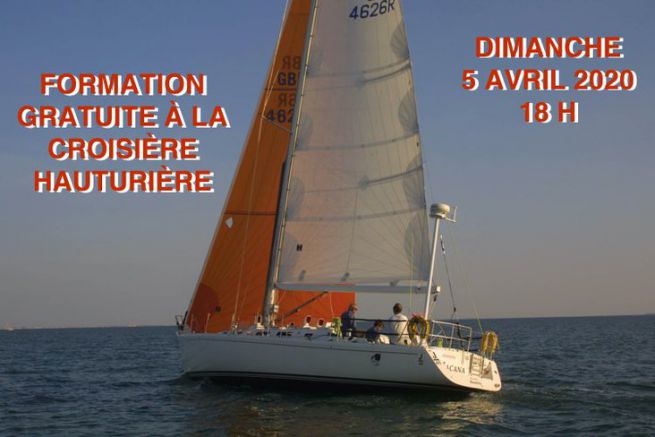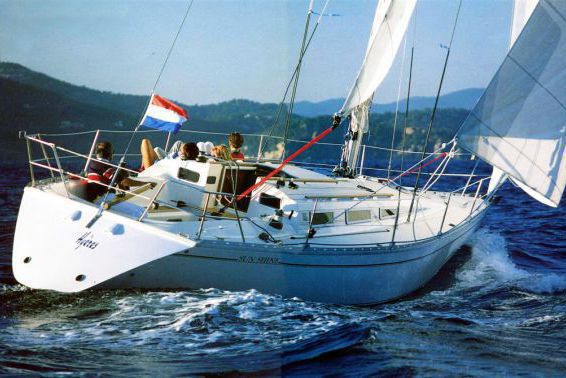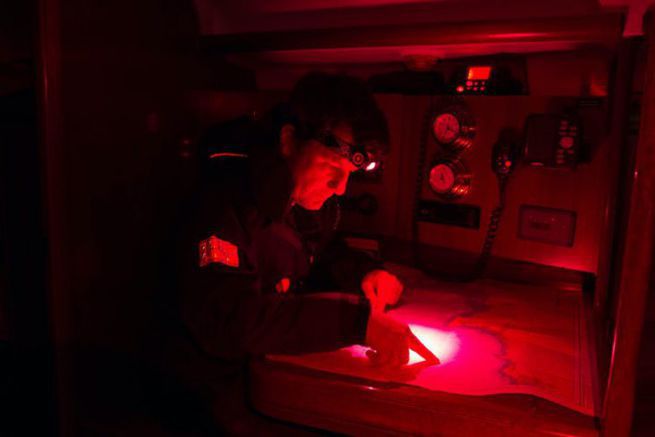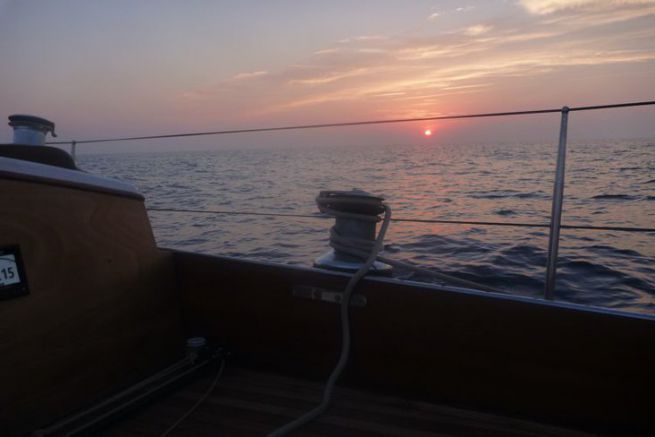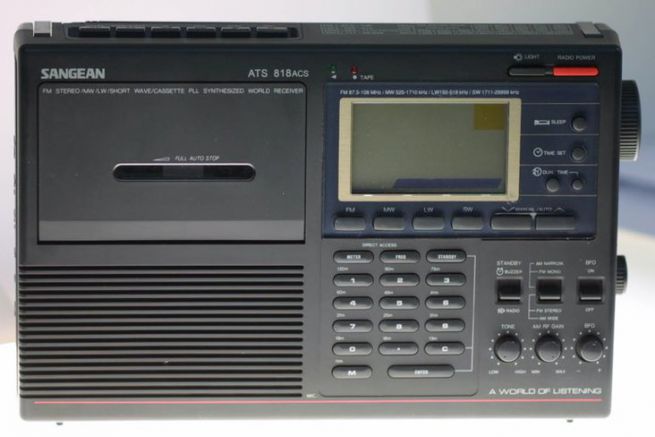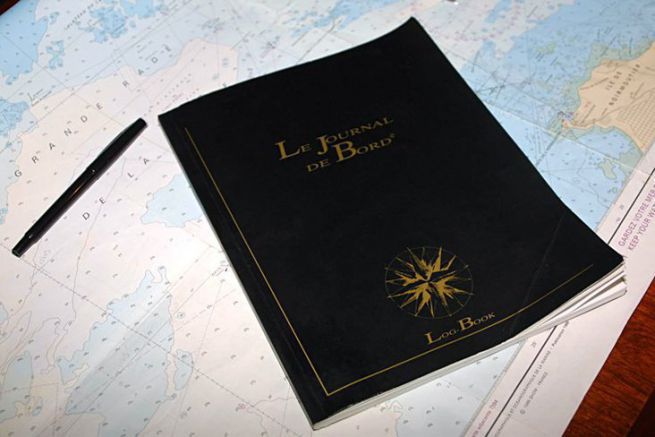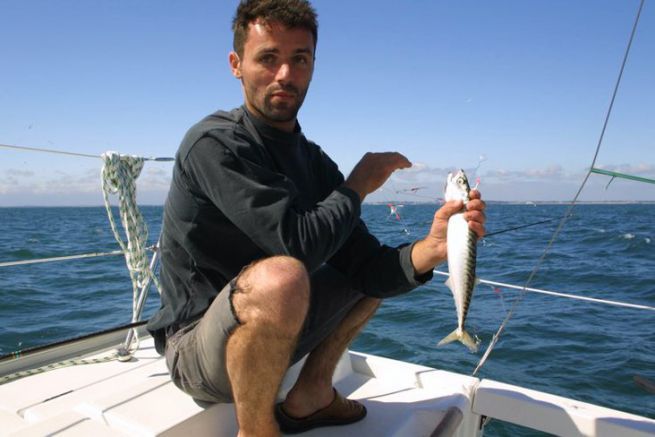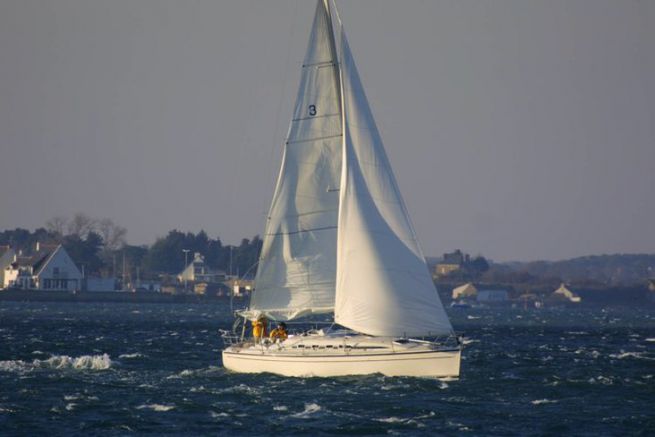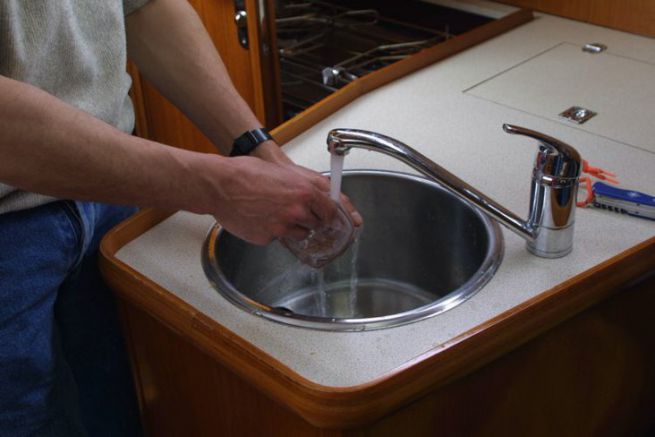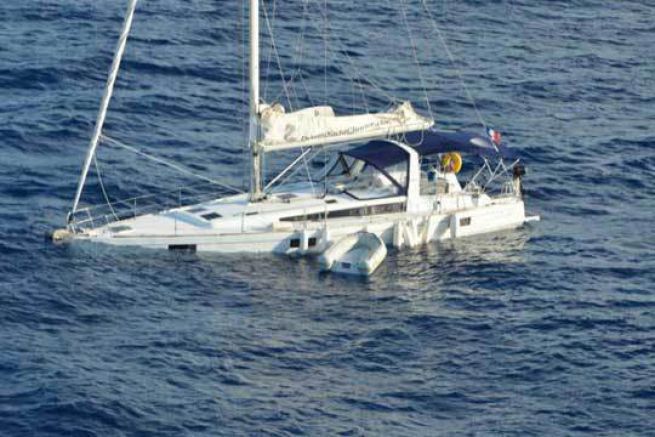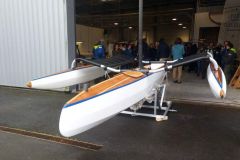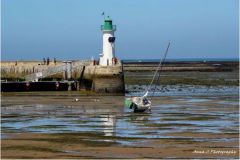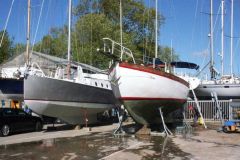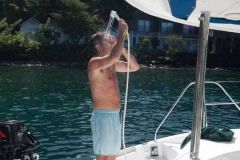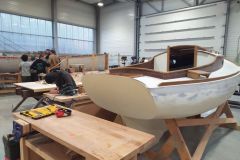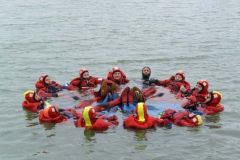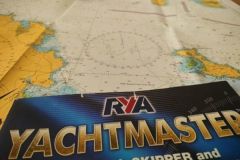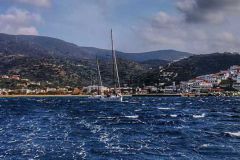On the 7th day of her crossing, we learn that the Sunshine 38 Suhaili ran out of fresh water. What happened? How could the crew complete the journey without dying of thirst? Here is an inventory of the precautions they took before departure..
Water storage
Suhaili has two independent tanks. When the first one is finished, the second one is put into operation. Here the second tank was punctured just after the first one was emptied. But the crew had taken care to take 120 litres of bottled mineral water on board for drinking. So they were assured that they would not run out of drinking water. On top of that, they had two half-filled 10-litre cans for survival in the event of a shipwreck.
Calculation and optimization of water consumption
To determine the minimum amount of water to be taken on board, the skipper divided it into several items
- drinking water
- water for cooking (rinsing and cooking)
- water for hygiene
In this configuration, each crew member could take a shower every 3 days, as long as they only used 3 litres each time.
The details of these estimates, for 4 people on a 10-day crossing, are shown in the video. They are purely indicative, it is up to you to adapt them to your navigation.
Finally you can use sea water for washing dishes and pump fresh water with a foot pump which will greatly reduce your consumption compared to an electric pump.
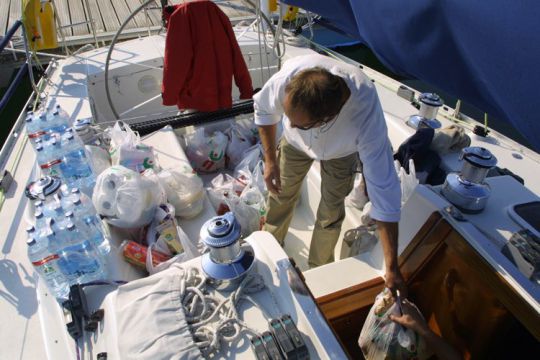
Provide a margin of safety
I recommend here to take 50% more water than the estimated consumption. This is to cope with a slowing down of the boat, due for example to a flat calm or a dismasting or any other damage. If the punishment lasts, you will obviously have to think about reducing consumption even further by not taking showers and rinsing the dishes.
A manual desalinator can also supplement these provisions.
Recovering rainwater
For long crossings, it is really appreciated to equip yourself with devices to collect rainwater. This can be very simple to do, either by fitting a small funnel in a sun canopy, or by taking a reef to direct the water flowing over the mainsail to a bucket. The large surfaces of the solar panels also lend themselves to these tricks.
Have a good crossing!
